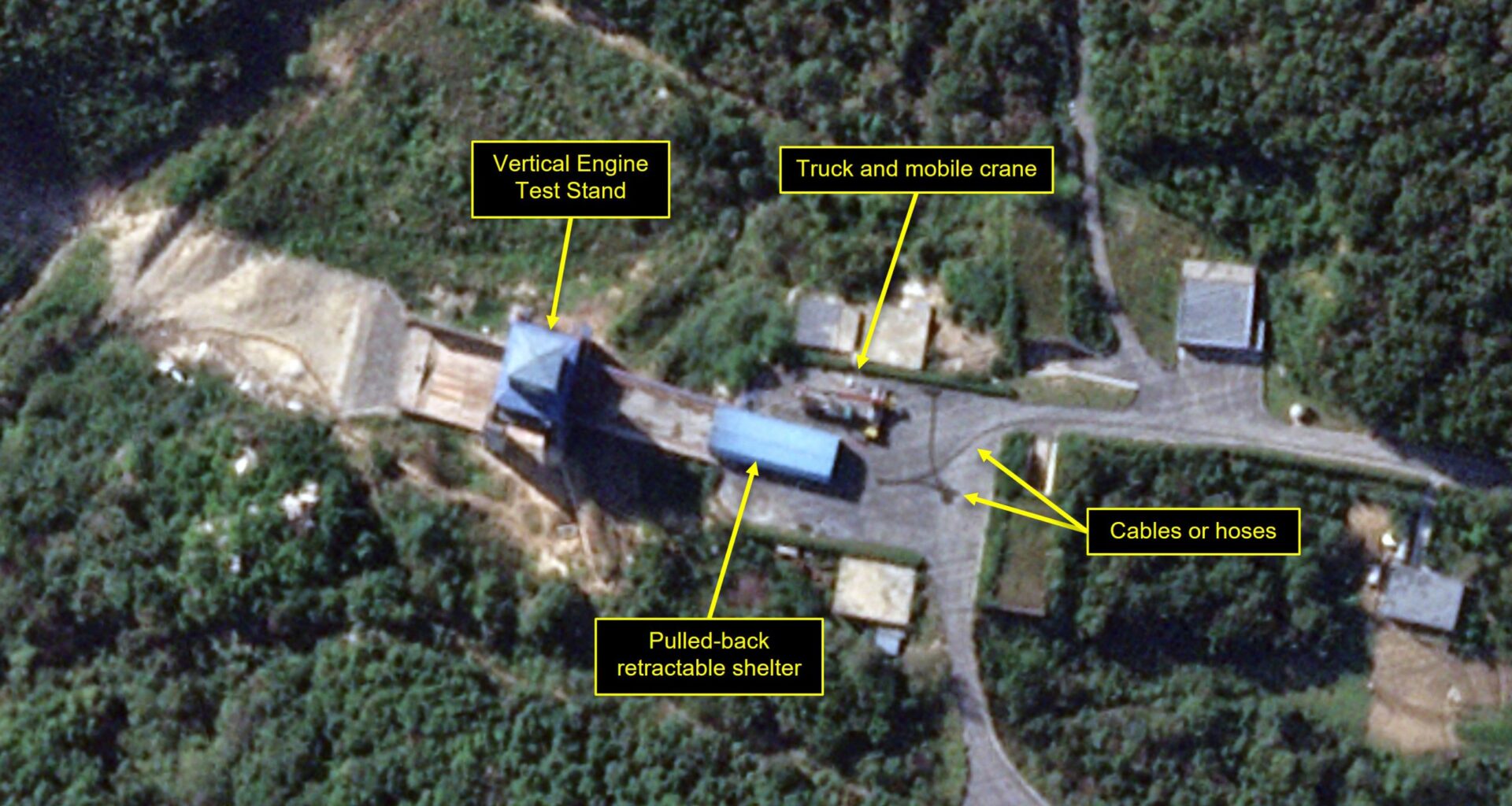Recent commercial satellite imagery shows uneven progress in the expansion and modernization of North Korea’s Sohae Satellite Launching Station. Since our last full site report in March 2025, work has continued on finishing the seaport and connecting it to the main Sohae complex. Activity around the vertical engine test stand indicates a small engine test was conducted recently, although none have been reported in North Korean state media to date. Progress on other areas, such as the new assembly building and the old launch pad area, appears to have slowed.
North Korea has not reported a reconnaissance satellite launch attempt since the failed launch of the Malligyong-1-1 in May 2024, and no signs of an imminent launch have been observed.
Kim Jong Un had once announced a goal of launching three additional reconnaissance satellites by the end of 2024. That deadline passed without success. It is worth noting that in September 2023, during the Putin-Kim summit at the Vostochny Cosmodrome, Russia expressed a willingness to help North Korea’s satellite program. This long delay in further launches may be a sign that cooperation is underway.
Vertical Engine Test Stand (VETS)
Imagery from September 27 and 29 revealed that a rocket engine test had taken place at the VETS.
On September 27, the mobile shelter was seen pulled back from the stand and a truck and mobile crane were seen parked on the pad. An unidentified object was observed in the truck bed. Several service carts with hoses or possible cabling were seen lying on the nearby tarmac.
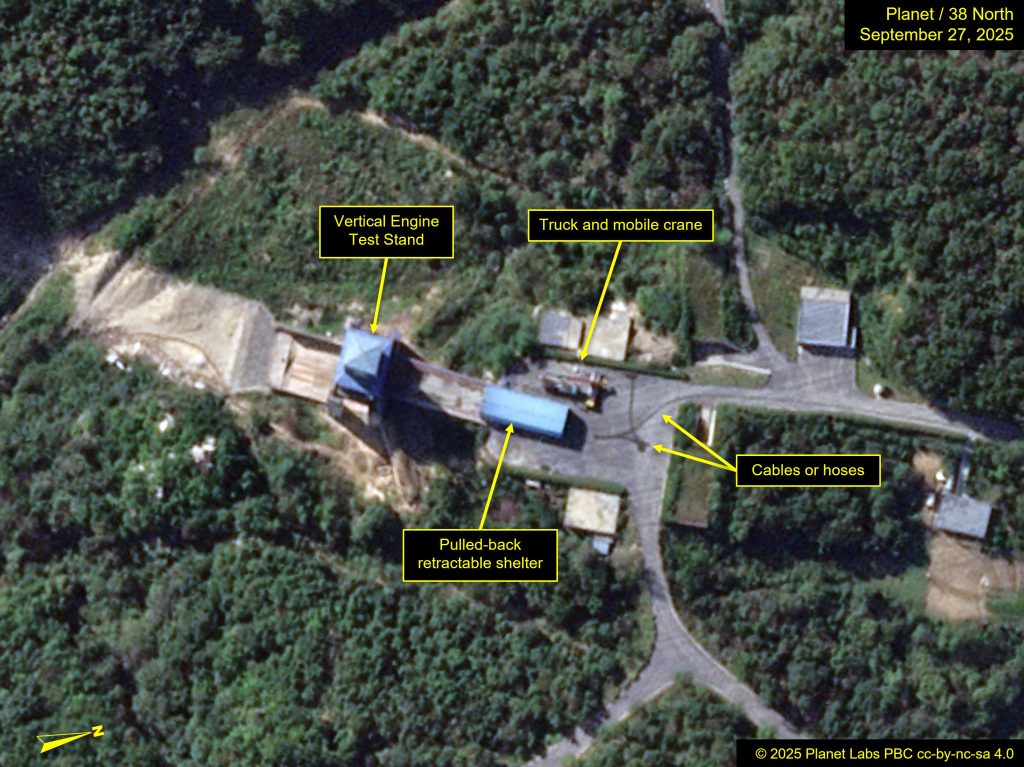 Figure 1. Imagery from September 27 indicates the mobile shelter at the VETS was pulled back from the stand. A truck and mobile crane were also observed nearby. Image © 2025 Planet Labs, PBC cc-by-nc-sa 4.0. For media licensing options, please contact [email protected].
Figure 1. Imagery from September 27 indicates the mobile shelter at the VETS was pulled back from the stand. A truck and mobile crane were also observed nearby. Image © 2025 Planet Labs, PBC cc-by-nc-sa 4.0. For media licensing options, please contact [email protected].
By September 29, the shelter had been returned to its typical position and there were no signs of vehicle traffic.
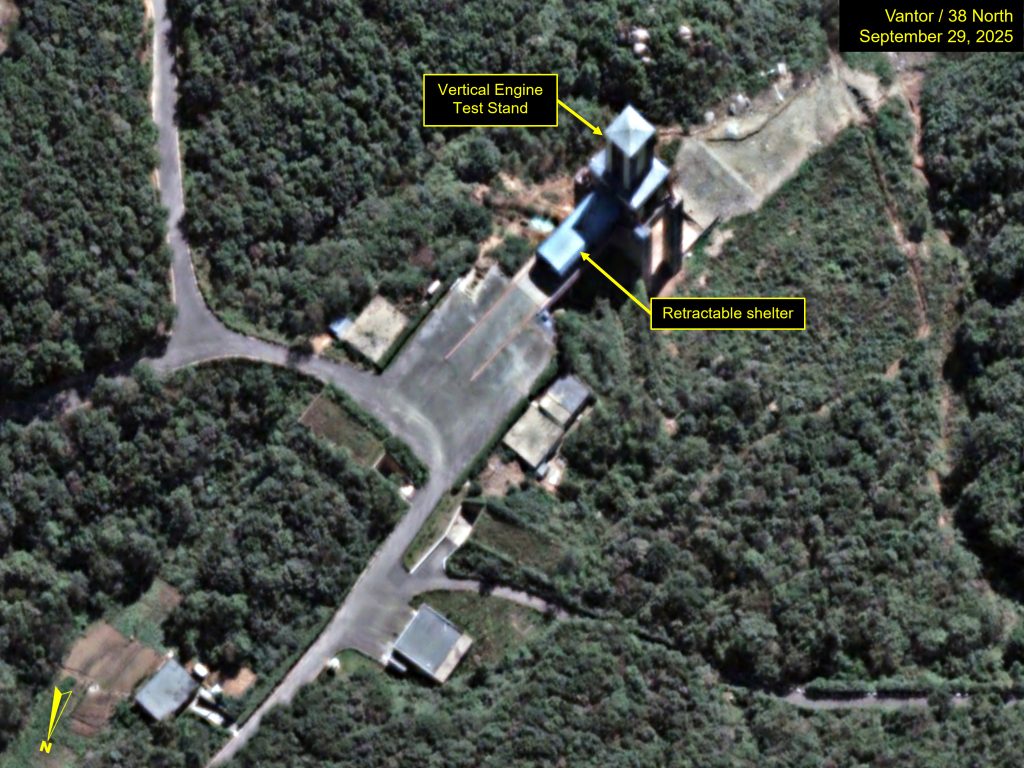 Figure 2. Imagery from September 29 shows the shelter was returned to its initial position and vehicles were no longer seen in the area. Satellite image ©2025 Vantor.
Figure 2. Imagery from September 29 shows the shelter was returned to its initial position and vehicles were no longer seen in the area. Satellite image ©2025 Vantor.
Imagery from October 4 revealed limited burn marks in the exhaust bucket, suggesting a test of a smaller, upper stage rocket engine had occurred. The orange residue suggests that the engine uses fuel and nitric acid or nitrogen tetroxide oxidizer. China and Russia, along with North Korea, extensively use UDMH fuel in their launch vehicles. Visible orange stain streaks from fuel and oxidizer, along with streaks from cooling the engine exhaust, are observed in the flame bucket.
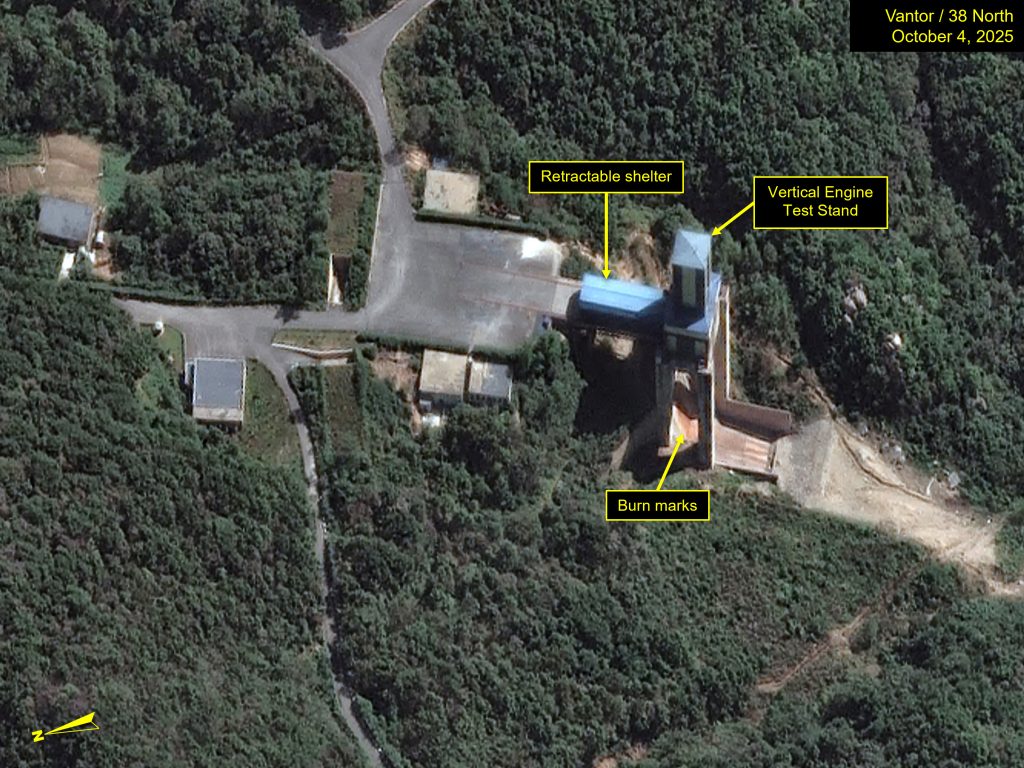 Figure 3. Imagery from October 4 reveals burn marks in the VETS exhaust bucket, suggesting a small, upper stage rocket engine test had occurred. Satellite image ©2025 Vantor.
Figure 3. Imagery from October 4 reveals burn marks in the VETS exhaust bucket, suggesting a small, upper stage rocket engine test had occurred. Satellite image ©2025 Vantor.
Other Developments
Construction activity first reported in March 2025 continues to progress, but at a slower pace than previously observed. The docking slip at the seaport to accommodate large vessels appears to be complete, reaching into the sea to avoid impacts of severe tides. Rails located along either side of the slip will likely support an overhead, traveling gantry crane. A. This may be to support a heavier crane base on the north side to better support the crane in moving loads from vessels onto trucks. In addition, five lattice masts have been erected along either side of the pier, likely to support flood lights. The coastal road leading from the port to the launching station is now completely paved.
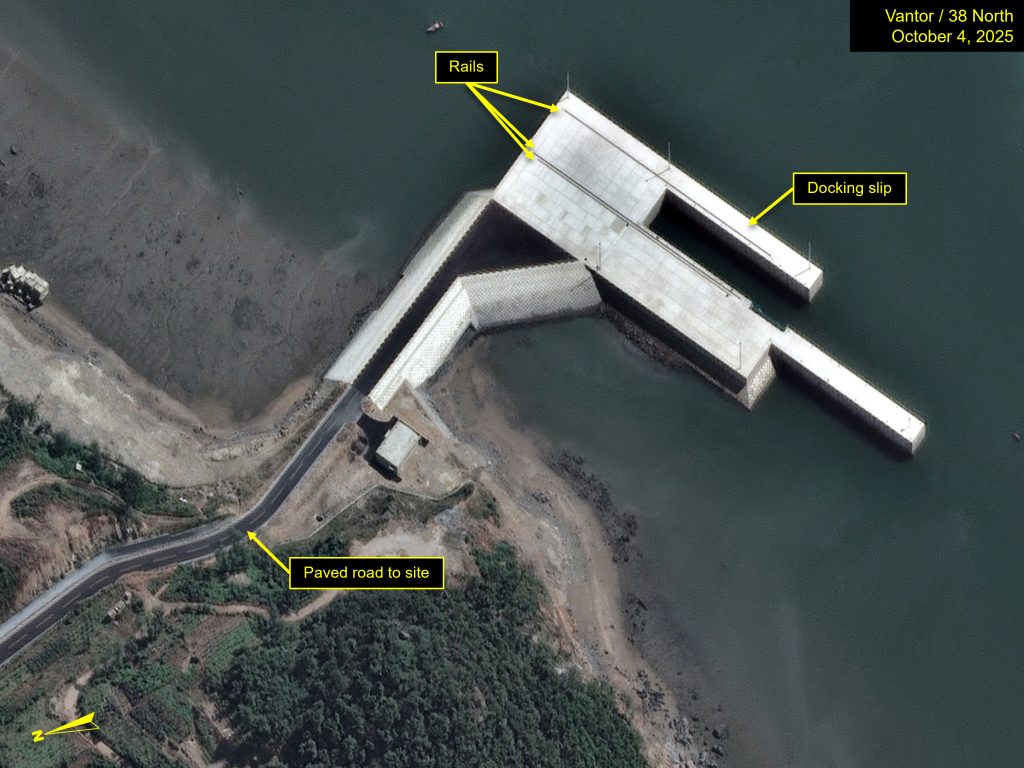 Figure 4. The seaport docking slip appears to be completed on imagery from October 4, 2025. Satellite image ©2025 Vantor.
Figure 4. The seaport docking slip appears to be completed on imagery from October 4, 2025. Satellite image ©2025 Vantor.
Imagery from March 2025 indicated a new section of road was being excavated to join the east tunnel entrance to the coastal road, though as of early October 2025, it has yet to be completed. The slow progress may be due to the amount of earth needing to be removed to join the two points because of the mountainous terrain. It also remains to be seen whether this passage will just be a road or if it will also support a rail spur. has been prepared closer to the coastal launch pad, similar in width to the existing road. The purpose of this is unclear.
An approximately 2,400 square-meter area has been built up along the west side of the road, which may serve as a convenient location for depositing the rubble from the cut through, or serve as the foundation for a support structure.
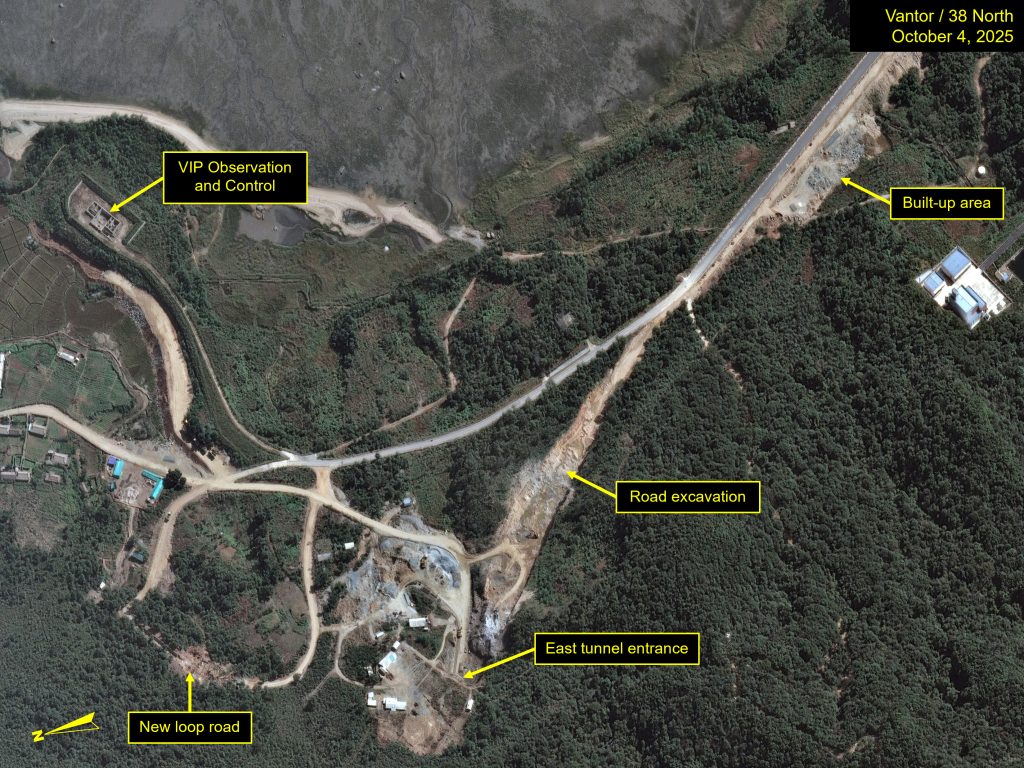 Figure 5. Overview of construction activity near east tunnel entrance. Satellite image ©2025 Vantor.
Figure 5. Overview of construction activity near east tunnel entrance. Satellite image ©2025 Vantor.
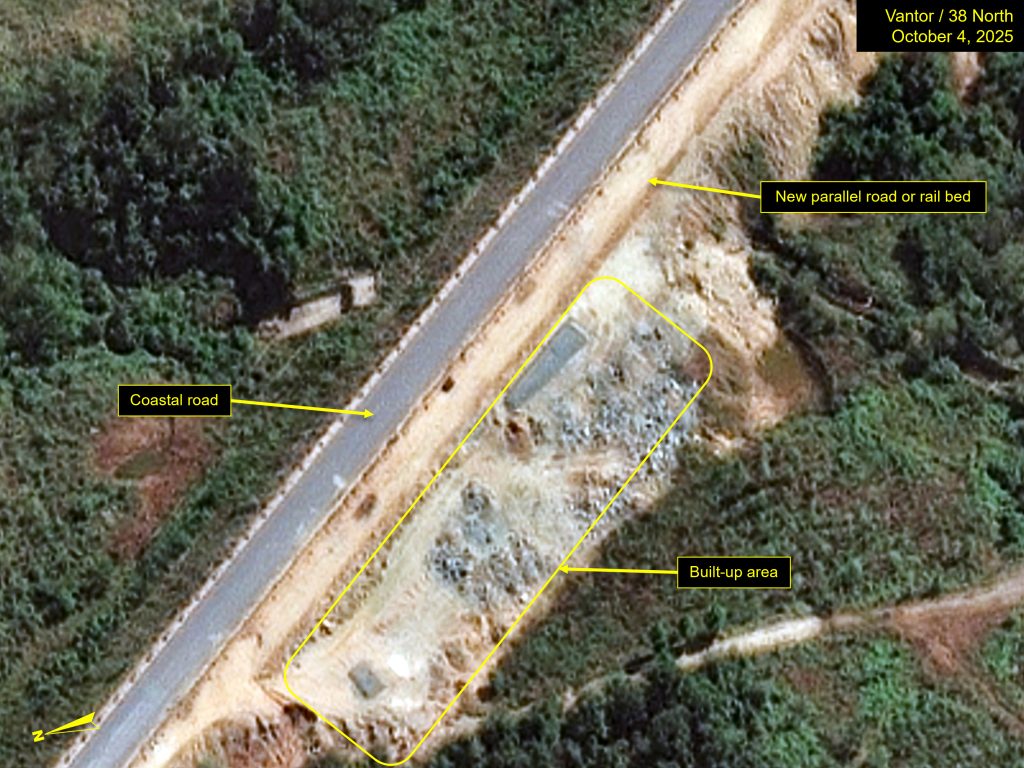 Figure 6. Close up of new parallel road or rail bed and built-up area alongside coastal road. Satellite image ©2025 Vantor.
Figure 6. Close up of new parallel road or rail bed and built-up area alongside coastal road. Satellite image ©2025 Vantor.
In addition, a loop road has been added immediately north of the east tunnel entrance. There is unidentified construction at its mid-point along the hillside.
Slowed Activity
Construction progress on the new receipt and assembly building, the west tunnel entrance, and the new rail spur that will connect both to the main rail line coming into the site has changed little since March. The side rooms lining the new receipt assembly building were left uncovered in the spring, and many have yet to be roofed. In addition, both the rail bed supporting the new spur and west tunnel entrance have seen little change. It is unclear why progress on these projects has slowed.
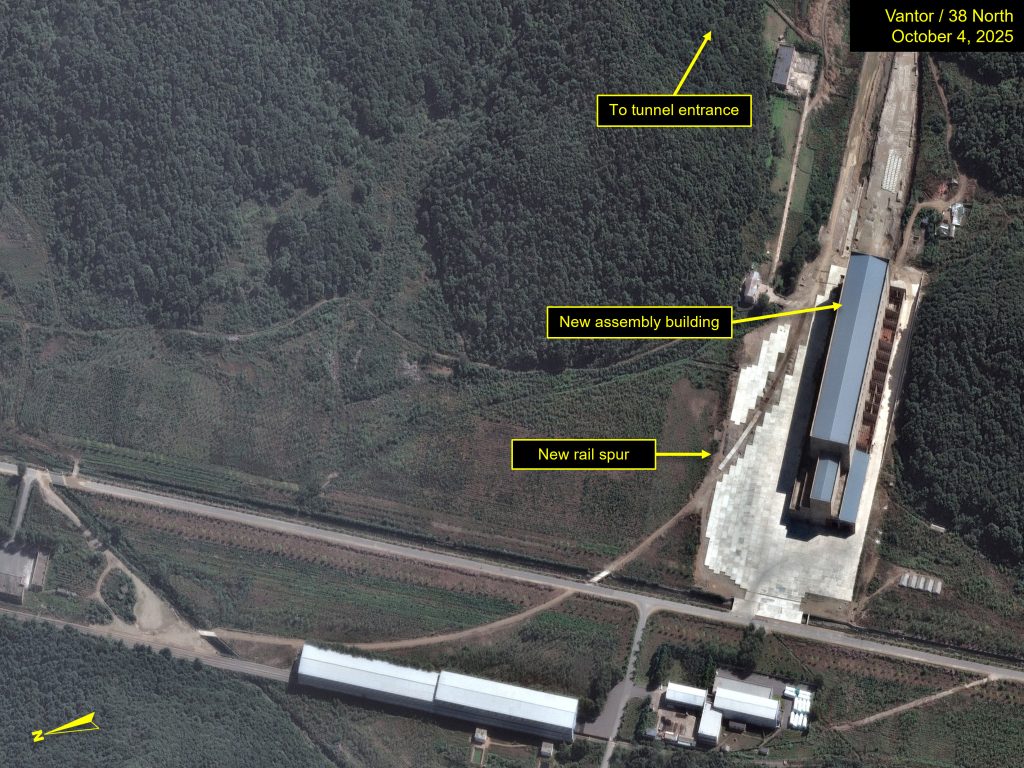 Figure 7. Overview of rail spur activity at the new assembly building on imagery from October 4, 2025. Satellite image ©2025 Vantor.
Figure 7. Overview of rail spur activity at the new assembly building on imagery from October 4, 2025. Satellite image ©2025 Vantor.
No Movement
No activity at the original launch pad or the nearby fuel/oxidizer bunkers and support buildings have been observed in recent months.
Likewise, at the original horizontal assembly and storage building, the 12 cylindrical storage tanks that were first observed in July 2023 have yet to be moved. The rail spur which previously serviced the main launch pad, has been truncated and the remaining portion falling into disrepair. This means for now, the only way to move rocket stages from the site’s rail transfer station to the pad is by road.
